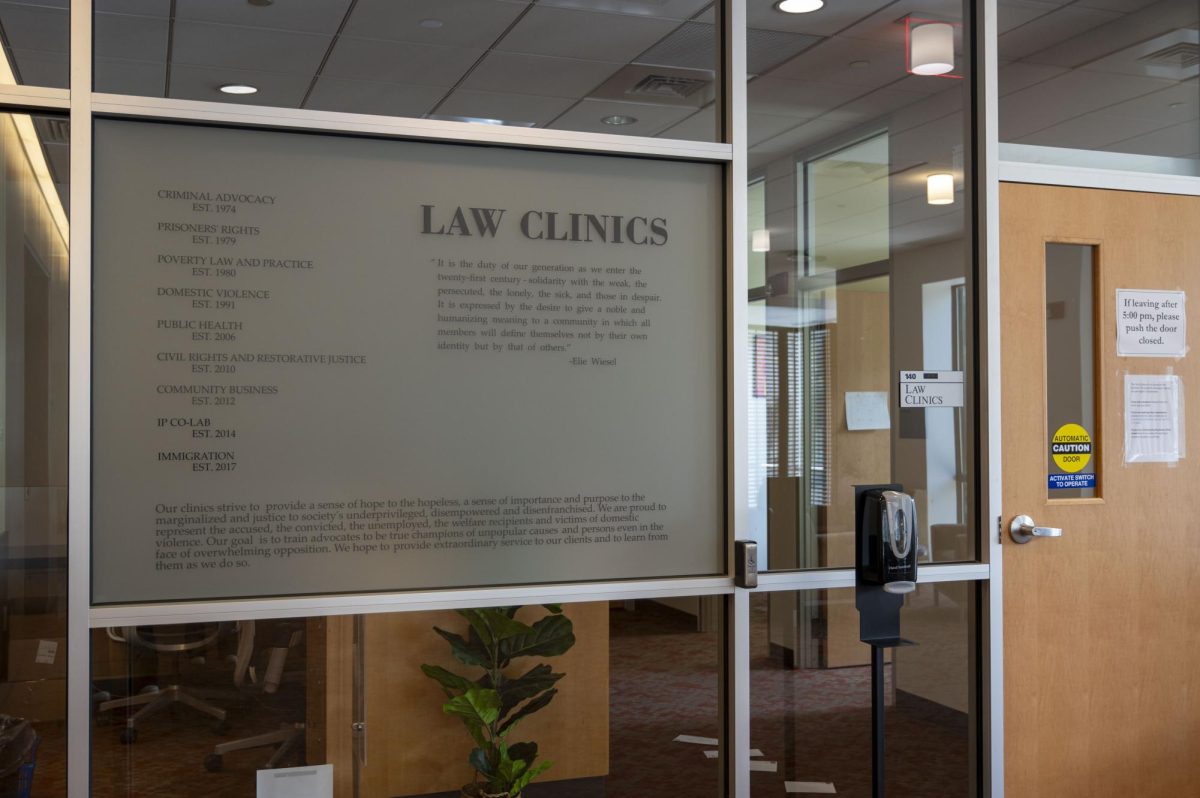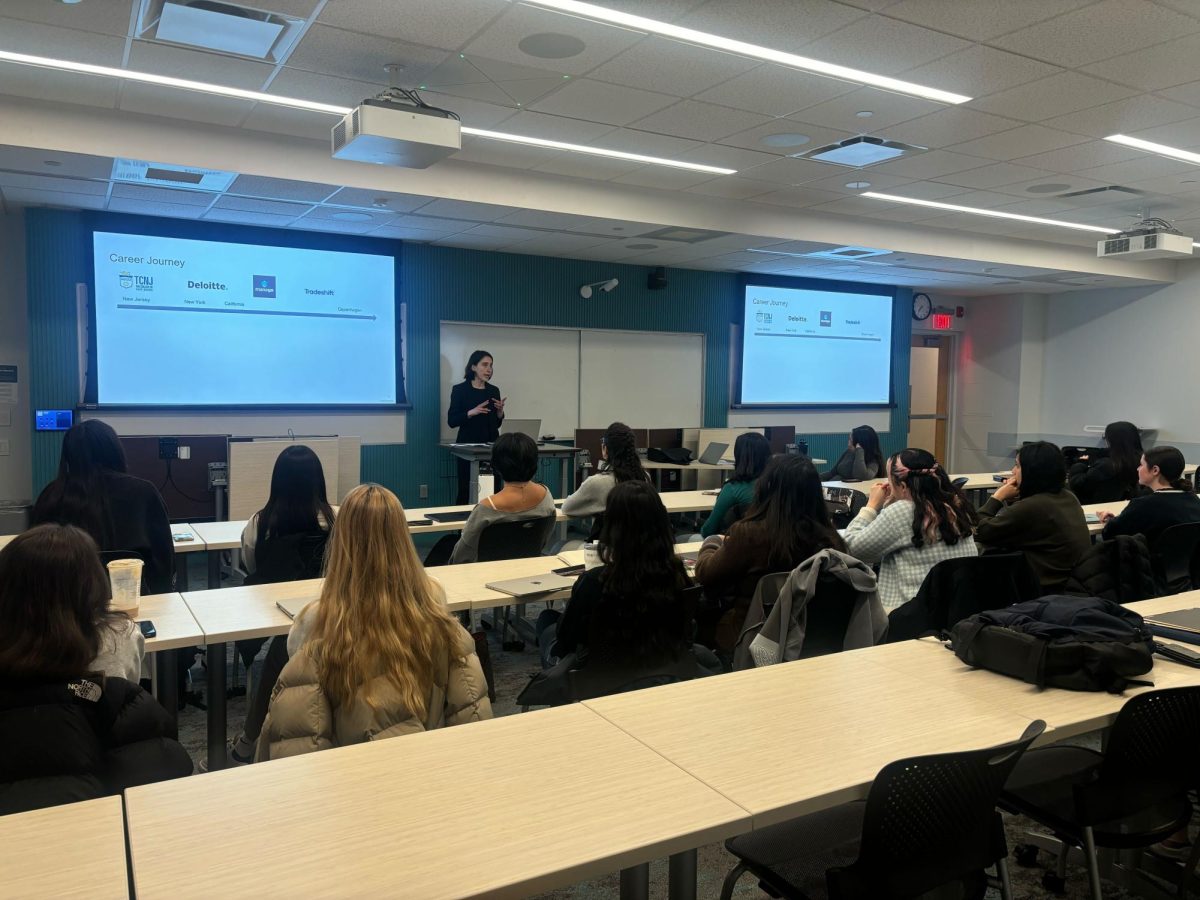In 2008, Northeastern law professor Margaret Burnham was an attorney representing the families of the victims of a crime more than four decades old. The case, which involved two Black men who were brutally murdered by the Ku Klux Klan in May 1964, changed Burnham’s career and was the catalyst for her founding of The Civil Rights and Restorative Justice Project.
The Civil Rights and Restorative Justice Project, or CRRJ, operates out of the Northeastern University School of Law and is dedicated to creating a database documenting racially-motivated homicides that took place between 1930 and the mid-1950s. The team consists of a small group of law professors, historians and research assistants who have compiled over 1,000 case files in one of the most comprehensive digital records on the subject to date, according to the project’s website.
Burnham started CRRJ in 2007 after the high-profile case of Charles Eddie Moore and Henry Hezekiah Dee. Dee and Moore’s bodies were found in July 1964 — two months after they were murdered — in the Mississippi River when the Federal Bureau of Investigation, or FBI, and more than 400 sailors were looking for three other missing civil rights workers.
Even after finding the bodies, federal authorities ignored Moore and Dee’s murders until the early 2000s. In 2007, the Justice Department pursued a criminal case against one of the Klansmen responsible. In 2008, the families of Dee and Moore filed a civil suit against Franklin County, Mississippi law enforcement officials for aiding and abetting the Klan in their murder.
Their case inspired Burnham to discover and document other racist crimes that have not been brought to justice and helped shape the original mission and research of CRRJ.
“[Burnham] started the work back in 2007 investigating these cases. She then brought on professors and used her extensive network to help build up the project from there,” said Catherine McGloin, a communications specialist at CRRJ.
Rose Zoltek-Jick, associate director of CRRJ and a former prosecutor who has taught criminal law at Northeastern for 38 years, said “the project is really about the failure to prosecute” racially-motivated crimes throughout history.
“We are a law school, and our particular interest was in tracing the degree to which the justice system — the system of criminal justice — failed or vindicated the people who were killed,” Zoltek-Jick said.
Almost a century after many of these brutal murders were forgotten, Zoltek-Jick said the CRRJ still finds it important to correct the historical record and dig through information that has long been quashed and overlooked. To the center’s staff, telling the victims’ stories is “a really powerful thing, seen and observed in the experiences of the descendants of the victims in the archive,” said Lydia Beal, a research associate who began working at CRRJ full-time after graduating with a degree in Africana studies from Northeastern in 2022.
“We now have the data. We now have the facts. We now have the records to back up that [frequent racially-motivated homicides continued into the 1950s],” Zoltek-Jick said. “And that’s what universities do. They do this kind of research so that we can know what is true. And now we know what needs to be corrected in American history books and in our own understanding of ourselves.”
The initial investigative process includes CRRJ’s historian in Washington D.C. visiting the National Archive regularly and building an international repository of starting documents. These documents are usually Department of Justice or FBI files acknowledging the existence of a racially-motivated killing between 1930 and the mid-1950s. The team then uses that information to search for a number of primary source materials, Beal said.
The most important primary document is often a death certificate, Beal said. Then researchers can expand their search radius to find more records.
The team also utilizes genealogical research, tracking down living family members of deceased victims. The CRRJ staff then work to document the experiences of living family members. After gathering a sufficient amount of information, the findings are put into the archive and become accessible to the public.
However, Beal said the process isn’t always that straightforward; it was not uncommon for murders to go undocumented.
“[Records] in a lot of the counties where this history happened have been deliberately varied or omitted,” Beal said, adding that there’s an “ongoing joke within archival research that state or local governments will have lost the records in a flood or a fire.”
The other main way the project finds new cases is by being contacted by living family members of the deceased. The Charlotte Tribune published an article Sept. 22 about CRRJ education consultant Sara Merlo, a North Carolina native who discovered that her great grandfather — a justice of the peace — exonerated another justice of the peace after he murdered a Black man in 1953.
After originally hearing of this family history, Merlo became involved with CRRJ.
“[Merlo and her mother] got in touch with us to find out what we knew about his involvement because they wanted to know the truth about their own family,” Zoltek-Jick said.
Zoltek-Jick said Merlo’s case does not represent most cases, though.
“What is much more common is that families find out that we have discovered information about their loved ones who were killed and they get in touch with us,” she said. “Our attitude, position and definition of restorative justice is that the cases belong to history, but they also belong to the families.”
Zoltek-Jick said she has seen how life-changing the CRRJ’s work can be for families of victims.
“We run the gamut from people waiting for history to recognize their sorrow and their pain to people for whom we are uncovering family secrets,” she said.
Central to CRRJ’s mission is serving the victim’s family’s wishes for what they want to see done after a victim’s history is found. Descendants will often request certain “forms of redress,” Zoltek-Jick said. For instance, CRRJ will host memorials for families and friends of the victim and correct the official historical record to represent the situation accurately. For veterans buried in unmarked graves, CRRJ may work with the U.S. Department of Veterans Affairs to get a military headstone placed.
“It’s about the families that have had to live with and endure the trauma of the violence and of the fact that they had a loved one who was killed and taken from them,” McGloin said.
The Huntington News is dedicated to serving the Northeastern University community with original, professional reporting and creating an environment in which student journalists can learn from one another. Support an independent, free press at Northeastern University with your donation today.












